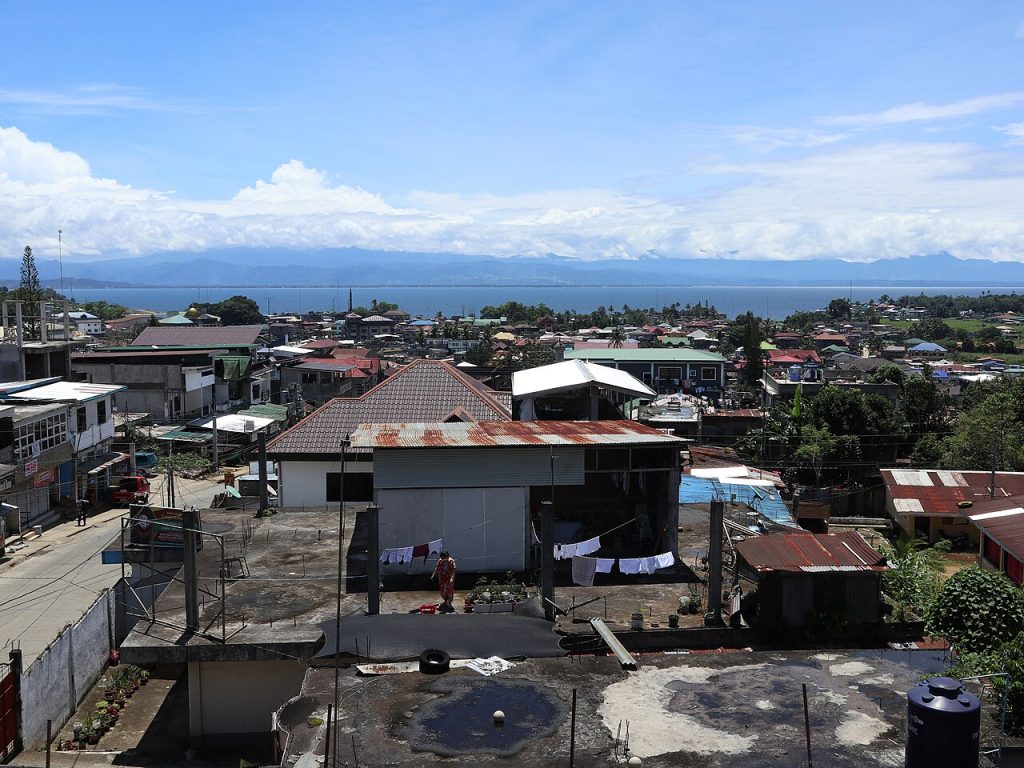
Marawi Población Top View, Marawi City by Patrickroque01
Let’s Discover Marawi City: A Resilient Gem in the Heart of Mindanao
Nestled in the lush, green mountains of Mindanao, the component city of Marawi in the Philippines holds a special place in the hearts of its people and visitors alike. Known as the “Islamic City of the Philippines,” Marawi is not just a historical, cultural, and spiritual hub, but a symbol of resilience, strength, and hope for the Filipino people.
This landlocked city sits on the shore of Lake Lanao in the province of Lanao del Sur, and some say it has 96 barangays while others say it has 101, it had a 2020 population of 207,010 people and covers 87.55 sq. kilometers (33.80 sq. miles) in land area.
by Paulina Ricci L. Javier
A Brief History of Marawi City
Marawi City, located in the province of Lanao del Sur, has a rich history that spans centuries. It is home to the Maranao people, one of the major Muslim ethnic groups in the Philippines. The city gets its name from the Maranao word “ranao,” meaning “lake,” referring to its proximity to Lake Lanao, one of the largest and most important lakes in the country.
The Maranao people have long been known for their distinct culture, art, and traditional governance. The region flourished through centuries of Islamic influence, with beautiful mosques, unique architectural styles, and a deep connection to their spiritual roots. Marawi is home to some of the most significant Islamic landmarks in the country, such as the beautiful Grand Mosque of Marawi.
The Siege of Marawi: A Dark Chapter in Its History
In 2017, Marawi City became the focal point of international attention due to the tragic Siege of Marawi. This armed conflict, which lasted for five months, was a result of clashes between government forces and the militant group Maute, which had pledged allegiance to ISIS. The battle devastated the city, causing massive destruction to its infrastructure and homes, and displacing thousands of residents.
Despite the physical and emotional scars left by the war, the people of Marawi have shown remarkable resilience. In the aftermath of the siege, the city has slowly been rebuilding, with efforts to restore infrastructure, provide aid to displaced families, and preserve Marawi’s cultural heritage. The recovery journey continues, and while the road to full restoration is long, the spirit of Marawi remains unbroken.
by South China Morning Post
Marawi’s Resilience: A City Rebuilding with Hope
One of the most inspiring aspects of Marawi’s story is its unwavering determination to recover. The people of Marawi are known for their strength and unity, and they continue to play an active role in the city’s rehabilitation efforts. Community-based projects, initiatives to provide jobs, and collaborations with national and local governments are all part of the ongoing recovery process.
The city’s resilience is not only reflected in its physical reconstruction but also in the restoration of its cultural identity. The people of Marawi have maintained their traditions, arts, and festivals, ensuring that the cultural heritage of the Maranao people is passed down to future generations. The restoration of historical landmarks like the Grand Mosque and the vibrant murals that depict the city’s history and struggles also speaks to the enduring spirit of Marawi.
Marawi’s Rich Cultural Heritage
Before the siege, Marawi was known for its vibrant cultural scene. The city’s unique blend of Islamic traditions and indigenous practices made it a fascinating destination for those interested in Filipino culture. The “Torogan,” a traditional Maranao royal house, was a symbol of the region’s rich heritage, and the local art, especially the intricate “okir” designs, has captured the attention of art enthusiasts worldwide.
Marawi is also home to some of the best cuisine in Mindanao. Traditional Maranao dishes such as senga (a type of soup), bubus (sweet treats made from coconut), and palapa (a spicy condiment) offer visitors a taste of the region’s vibrant culinary culture. The food, combined with the warm hospitality of the people, makes Marawi a unique and unforgettable place to experience.
by Uraura TasyoTV
Tourism in Marawi: A Growing Opportunity
While Marawi City is still in the process of rebuilding, it remains a place of interest for travelers who want to experience the culture, history, and beauty of the area. The proximity to Lake Lanao, surrounded by rolling hills, offers a stunning natural backdrop for visitors. The lake is not only a place of scenic beauty, but it also holds spiritual significance to the Maranao people.
In the near future, as Marawi continues to recover, it has the potential to become a burgeoning tourism destination. Efforts to promote sustainable tourism will allow visitors to explore the rich cultural and natural resources of the region while also contributing to the local economy and supporting ongoing recovery efforts.
A Bright Future Ahead
Marawi City’s journey is far from over, but the strength and unity of its people continue to inspire. Though the scars of war are still visible, the hope for a better future remains strong. Marawi is not just a place on the map—it is a symbol of resilience and rebirth, a city with a rich history, an enduring culture, and a people who will not be defeated.
For those looking to experience a different side of the Philippines—one marked by resilience, hope, and cultural richness—Marawi City stands as a testament to the human spirit’s ability to overcome even the toughest challenges. The road to full recovery may take time, but the journey is one worth following
by MyTravelog